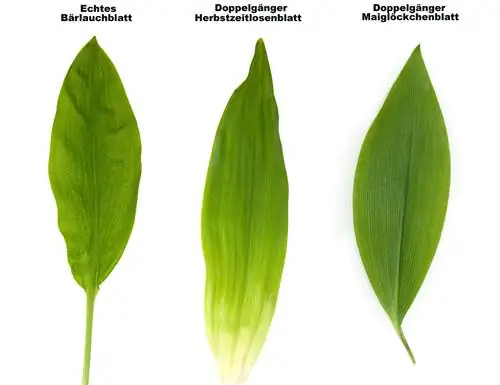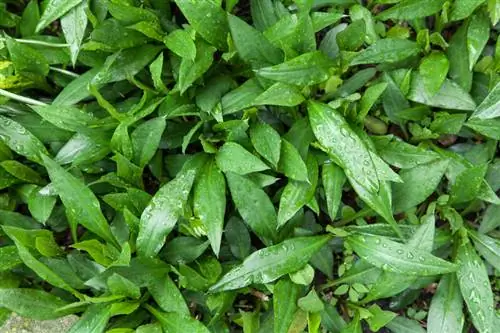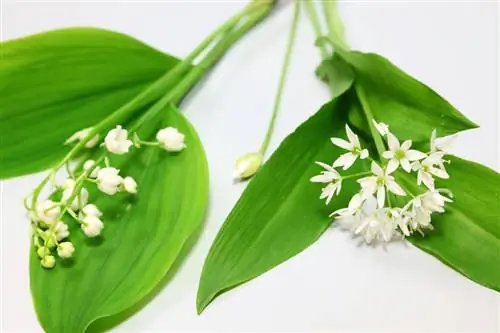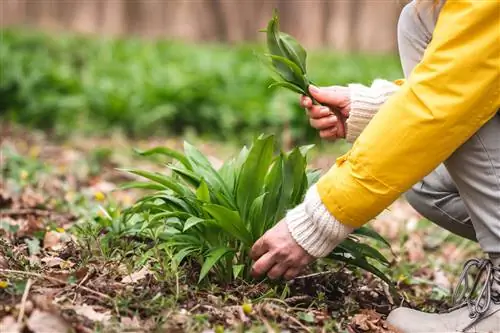- Author admin [email protected].
- Public 2023-12-16 16:46.
- Last modified 2025-01-23 11:22.
In the forest you can not only collect mushrooms, but also the delicious garlic substitute wild garlic. But be careful: As with mushrooms, there is a risk of confusion with this herb with very similar but poisonous plants! Read how to distinguish wild garlic from its poisonous counterparts.
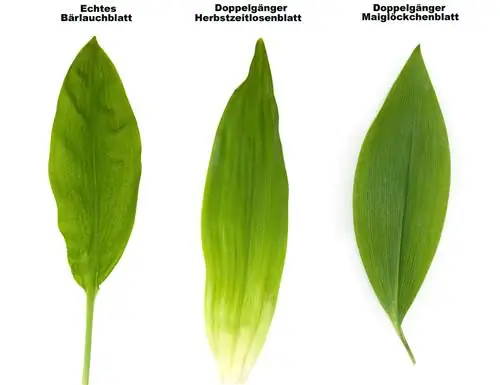
Does wild garlic have poisonous doppelgängers?
TheLily of the Valleyand theAutumn crocus are considered poisonous doppelgangersThe leaves of both species look very similar to those of wild garlic, which is why the plants can easily be confused with one another. The autumn crocus is particularly dangerous, especially since this speciesoften grows nearwild garlic patches.
How do you distinguish wild garlic from poisonous counterparts?
To distinguish wild garlic from its poisonous counterparts, you have to look closely at theleaves For example, lily of the valley leaves have many closely spaced leaf veins, while those of wild garlic are further apart. In addition, lily of the valley always has two leaves growing from one stem, while wild garlic only has one.
The leaves of the autumn crocus grow like rosettes with three to four leaves each and without a stem directly from the ground, while each wild garlic leaf has its own stem. Another distinguishing feature is thesmell: If you rub wild garlic leaves between your fingers, they smell intensely of garlic. Lily of the valley or autumn crocus leaves, on the other hand, are odorless.
Which plants can be confused with wild garlic?
The young leaves of theSpotted Arum (Arum maculatum) can also be easily confused with wild garlic. Older leaves are arrow-shaped and feature dark leaves. However, the young leaves of the arum can be distinguished from those of wild garlic by their irregularly shaped leaf veins: the leaf veins of which run parallel to one another.
Why can't you orient yourself by smell?
Of course, the easiest way to distinguish wild garlic from its poisonous counterparts is by smell. If you rub wild garlic leaves between your fingers, they give off a characteristic, strong garlic scent. The leaves of the poisonous species, however, are odorless.
However, you can only use thesmell test on the first leafto identify the species: thegarlic scent sticks to your fingers, so you can do the following Can no longer clearly distinguish leaves by smell. It is therefore important to also use other characteristics for the determination.
Tip
What happens if you eat the wrong wild garlic?
The first symptoms of possible poisoning with false wild garlic appear just a few hours after a meal. Typical symptoms include: burning in the mouth as well as difficulty swallowing, diarrhea, vomiting and (bloody) diarrhea. Poisoning with the autumn crocus can be fatal, which is why you should call an emergency doctor immediately! Drink plenty of still water (not milk!) to dilute the toxins in the body.

